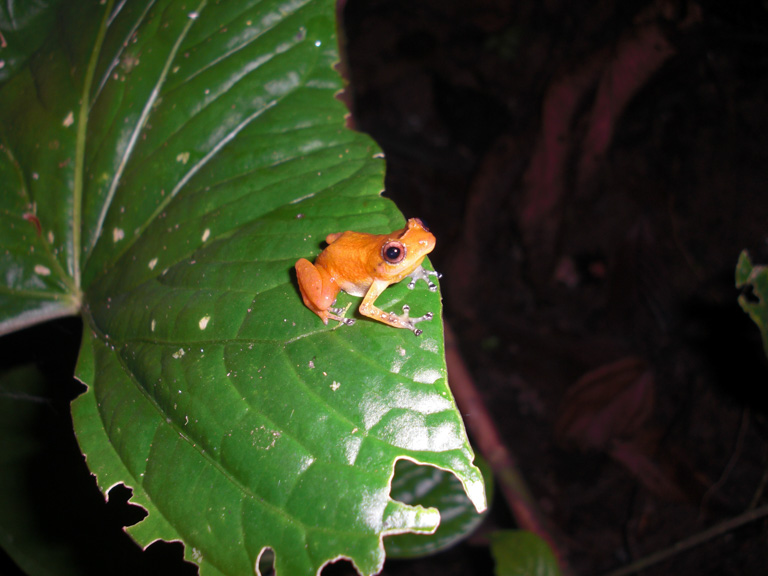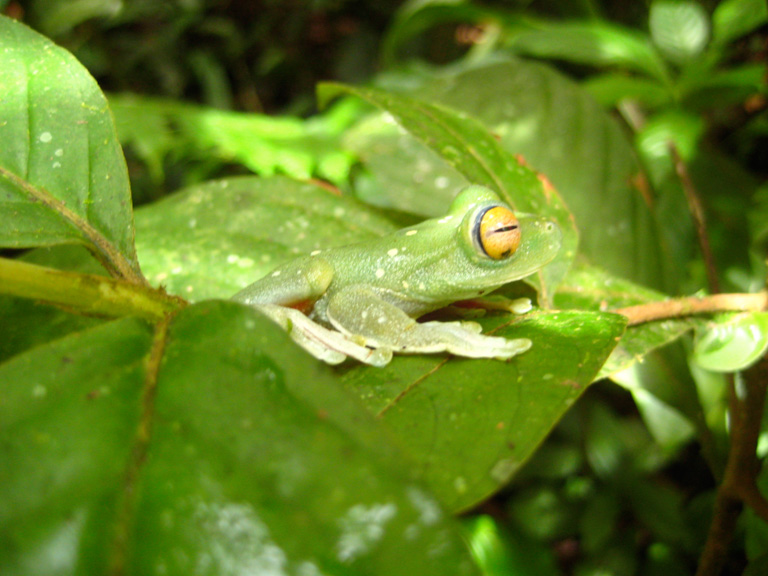- Scientists discovered that frogs in the El Copé forest appear to have found a way to live with chytrid (Batrachochytrium dendrobatidis), a fungus that is still devastating amphibian populations in other parts of the world.
- The team found that surviving frog species had similar survival rates whether they were infected with chytrid or not.
- The results offer the possibility that frog communities, though altered, can stabilize after these catastrophic events.
Frogs in a tropical forest in Panama are doing better than scientists believed after a devastating fungus slashed population numbers and wiped out entire species about a decade ago.
In a study published Oct. 3 in the journal Ecological Applications, a team of scientists reports that frogs in the El Copé forest — at least the species that survived the outbreak that began in 2004 — have found a way to live with chytrid (Batrachochytrium dendrobatidis), a fungus that continues to tear through amphibian populations in other parts of the world.

“Our results are really promising because they lead us to conclude that the El Copé frog community is stabilizing and not drifting to extinction,” Graziella DiRenzo, a disease ecologist at the University of California, Santa Barbara, and the lead author of the paper, said in a statement.
Biologists know that chytrid has contributed to the global die-off of amphibian species. In El Copé, around 50 percent of the native frog species disappeared. But what happens after such cataclysmic events has remained a mystery.
“That’s a big concern with chytrid worldwide,” said DiRenzo, who completed the work as part of her doctorate at the University of Maryland. “Before this study, we didn’t know a lot about the communities that remain after an outbreak. In some areas, it’s still a black box.”

But scientists have been studying the frogs of El Copé for a long time, making it something of a natural laboratory to investigate the dynamics between the animals and pathogens. Between 2010 and 2014, DiRenzo and her colleagues visited a 2-square-kilometer (0.77-square-mile) field site annually, testing for the presence of chytrid. The team then employed a statistical model to extrapolate their results to the greater population.
They found that infected and uninfected frogs were surviving at about the same rate: 96 percent. What’s more, most infected frogs seemed to be able to keep the proliferation of the fungus under control.
“Our study found that, even though there are a lot of infected individuals, about 98 percent of them are infected at very low levels,” Karen Lips, a zoologist at the University of Maryland who has been studying the interaction between chytrid and amphibians for decades, said in the statement.

Lips said that when the outbreak in El Copé began, certain species carrying the fungus were more likely to spread the affliction to other frogs.
“But some of these species are now gone, so the entire ecosystem is totally different,” she said. “It’s almost not comparable to what was there before.”
The evidence that the team has turned up might show that the community of frog species has stabilized, providing some hope that frogs in other parts of the world where chytrid has struck might also be able to adapt to the pathogen.
“The fact that some species survived is the most important thing,” Lips said. “If enough frog species in a given place can survive and persist, then hopefully someday a vibrant new frog community will replace what was lost.”
Banner image of a frog from the genus Diasporus in El Copé, Panama, by Graziella DiRenzo.
Citation
DiRenzo, G. V, Zipkin, E. F., Grant, E. H. C., Royle, J. A., Longo, A. V, Zamudio, K. R., & Lips, K. R. (2018). Eco-evolutionary rescue promotes host–pathogen coexistence. Ecological Applications.
FEEDBACK: Use this form to send a message to the author of this post. If you want to post a public comment, you can do that at the bottom of the page.
